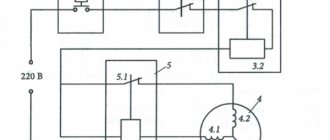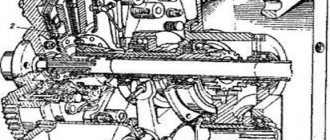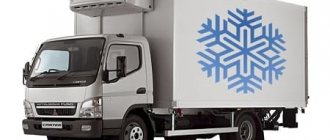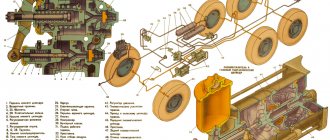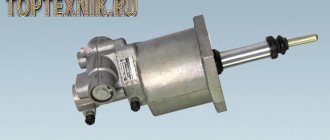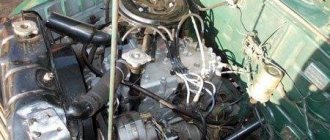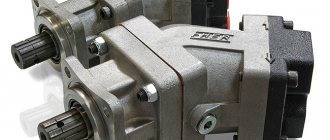This rotary equipment is widely used in the organization of pneumatic systems. Therefore, let’s look at what a screw compressor is from different angles: description, design, principle of operation and other important features will be the focus of our attention. Maximum information to make it easier for you to choose a model that meets the requirements for performance, operating pressure and power consumption.
A little history: the first working version of a volumetric screw-type compression machine was presented to the world by Swedish engineer Eliot Lysholm, back in 1934. The device was interesting and promising, but there was a big problem in low energy efficiency, which turned out to be lower than that of piston compressors.
Screw compressors gained popularity and widespread use several decades later, when asymmetrical screw rotors were invented. At the same time, new technologies made it possible to produce a high-precision rotor profile that ensured minimal leakage during compression. Modern versions are characterized by low power consumption and noise levels.
Features and advantages of screw compressor units
Today they are the most used air compression equipment and have almost completely replaced other types. The objects for their installation are enterprises of almost all types of industry:
- Construction
- Automotive industry
- Metallurgy
- Chemical industry
- Food industry
- Pharmaceuticals
- Mining industry
- Woodworking industry.
The reasons for its popularity lie in its numerous advantages, the key of which is the compression mechanism. The rotors used in this case with teeth rotating towards each other show themselves to be more reliable than pistons with their reciprocating motion, and also ensure compact size and light weight.
It is also worth considering that a screw compressor is a unit that pumps air constantly, not in pulses, and therefore does not need to connect a receiver. This reduces the cost of operation.
Among other advantages (compared to piston models).
- Economical energy consumption - consumption is 30% lower, which is possible due to the lack of friction in the screw block. Whereas in the design of the piston block, friction cannot be avoided.
- Durability - there are no valves, the lubrication and cooling system is simple and extremely reliable. As a result, the equipment can be operated for up to 10-12 years, only by performing scheduled maintenance.
- Impressive technical characteristics - the design of the screw compressor allows it to maintain efficiency at levels of up to 95% and above, while providing compressed air performance of up to 60 m3/min.
- The presence of sound insulation - thanks to special casings, a fairly low noise level is ensured. For example, ALMiG compressors have a noise level of 60 to 79 dB. And only the most powerful models – up to 83 dB.
- No vibration - since compression in the compressor occurs due to the rotation of the rotors, vibration is not created. Vibration of a screw compressor indicates a possible malfunction.
- There is a digital control that allows you to automatically control the operation of the equipment. Management can be carried out both directly and remotely.
- Low maintenance requirements - scheduled maintenance needs to be carried out every 4000-6000 hours of operation (versus 500 hours for piston models).
- Low oil consumption - up to 3 mg/m3, in comparison with piston engines, where the oil content in compressed air can reach 60 mg/m3.
- Undemanding in terms of installation and installation - due to their compact dimensions, there is a variety of options for their placement within the workshop (site); for installation there is no need to pour a separate foundation.
A separate advantage is air cooling, due to which there is no need to build in a recycling water supply and, even more importantly, it becomes possible to reuse the generated heat.
Advantages
Screw compressors are designed in such a way that the performance and service life of low-power engines increases, while energy consumption is reduced by half. The advantages of this type of equipment include compact size, light weight, reliability, and durability .
Screw units do not require continuous maintenance, since they are capable of operating in autonomous mode for a long time. They are quickly mounted in their own frames without a specially equipped foundation, and minimally vibrate during operation.
Screw types are equipped with noise-isolating casings and are quieter than others. In workshops with them, the most comfortable conditions for people are maintained.
Most representatives of the described class are equipped with a digital control board. Due to this, it is easy to change the pressure, program process cycles on a timer, and regulate energy consumption. Actions can be performed remotely.
Among the main advantages, one cannot fail to note the low oil consumption. Approximately 2-3 mg of lubricant is consumed per 1 m3, which is several times less than for piston modifications. This indicator is important for the quality of the exhaust air. The screw design works cleaner than others, which means it does not require additional filters and can even be used for pneumatic machines.
The air cooling principle eliminates the need to build in a recycling water supply system and allows the compressor heat to be reused (for example, for heating workshops).
A story about compressors from one of the manufacturers from a specialist
What is a screw compressor: device and principle of operation
This is a device for compressing and supplying air or other gases. Let's move on to the purpose of the parts.
Components
In general this is:
- suction filter - passes through itself and cleans the air in front of the compression unit;
- inlet valve – switches the compressor operating mode load/idle;
- electric motor – drives the rotors of the compression unit;
- screw block - two parallel oriented rotors (one convex, the other concave);
- drive – engages the screw pair with the engine, also responsible for rotation at a given speed;
- oil cooler – reduces the oil temperature to preset values, preventing overheating;
- oil separator - a special reservoir (tank) that separates oil from compressed air;
- thermostat - changes the direction of oil movement: small circle - directly into the screw block; large circle - through the cooler;
- oil filter – cleans the oil before feeding it into the screw unit;
- relay and safety valve - protect against damage by triggering when pressure suddenly increases;
- pipelines - connect all departments of the system, ensuring the passage of the oil-air mixture, oil and compressed air;
- fan – facilitates air intake and also performs the function of general cooling;
- control unit – monitors the operation of the compressor in normal mode, alerts in case of an accident and adjusts parameters;
- aftercooler – reduces the temperature of the medium before releasing it from the equipment.
The operating principle of a screw compressor in detail
Step by step it looks like this:
- the engine starts the rotors, which, in compliance with the schedule, rotate towards each other;
- as a result of this movement, atmospheric air is sucked through a filter, in which it is cleaned of mechanical impurities;
- in the screw block, air is mixed with oil, compressed and enters the oil tank;
- in the oil tank and separator, the compressed air is separated from the oil and flows through the aftercooler to the outlet of the installation, and the oil, after cooling, flows back into the screw block through the oil filter.
The compression process is automatic and is simple and efficient. And this is another advantage and another reason to use the equipment in question.
Compressor performance designation: IUPAC, GOST 2939-63, FAD
How do manufacturers typically list compressor performance in their beautiful, glossy catalogues? What performance can you realistically expect from a compressor?
Productivity is indicated in the so-called “Normal cubic meters per hour (minute)” - Nm3/h, Nm3/min. The letter “N” refers to “normal conditions” established by the International Union of Pure and Applied Chemistry (IUPAC) - temperature 0 ° C, absolute pressure 101325 Pa (760 mm Hg), relative humidity 0%. In Russia, GOST 2939-63 “Gases. Conditions for determining volume”, according to which the volume of gases should be reduced to the following conditions: temperature 20 ° C, absolute pressure 101325 Pa, relative humidity 0%. This means the following: when you come across the designation Nm3/h, you can confidently say that this is the performance reduced to the “normal conditions” established by IUPAC. Having encountered the same designation in Russian Nm3/h, it becomes difficult to say unambiguously which of the “normal conditions” (GOST or IUPAC) are meant. This question must be clarified with the managers of the supplying organization when choosing equipment!
Often foreign compressor manufacturers indicate compressor capacity in m3/h (m3/min) FAD at a certain outlet pressure. What does the abbreviation FAD mean? This is nothing more than an abbreviation for “Free Air Delivery” or “Atmospheric Air Supply”. A very common explanation is that this is the compressor performance reduced to suction conditions, which must be indicated. That is, FAD performance is the amount of atmospheric air compressed by a compressor per unit of time under given inlet conditions.
How does a screw compressor work, in what modes?
Several functional states are possible:
- Start – when you press the main button, the engine starts, which drives the rotors of the screw unit. The compressor switches to the next mode.
- Load - atmospheric air passes into the screw block through the suction filter and the open inlet valve. The pressure in the pneumatic network begins to rise and gradually reaches the upper value set on the controller. The compressor goes into idle mode.
- Idling - the intake valve closes and air stops entering the screw block. The motor and rotors of the screw block continue to rotate, but since there is no compression, the load in this mode is approximately 30% of the maximum power. This mode is needed so that, in the event of renewed consumption of compressed air, the electric motor does not start again.
- If consumption resumes, the compressor goes into load mode. If consumption has not resumed within a certain time (set in the controller), the compressor goes into unloading and stopping mode.
- Shutdown – shutdown of equipment in the normal (normal) manner.
- Alarm stop - emergency stop of work, with an urgent (unplanned) engine stop, skipping idling and other intermediate stages. This is done by pressing a button.
Compressor phasing
When choosing and purchasing a compressor, it is very important to determine its phases.
What types of phase compressors are there:
- Single-phase
- Three-phase
- Universal
Single-phase ones are often used for household work. For example: at home where the electrical network is in most cases 220V .
Three-phase are compressors that operate at a voltage of 380V . These are often purchased for large production.
And universal is a hybrid of the previous two, which can work with voltage 220V and 380V . Of course, the last two models will cost more. But such compressors are purchased for large production. For household work and needs, a 220V compressor is suitable for you.
Types of screw compressor units
There are a number of characteristics by which all current models are classified. Let's look at the main ones.
By type of drive there are:
- Belt - it is this element that connects the engine and the main unit that ensures the transmission of torque.
- Direct - the connection is already made with a coupling, which is a more reliable and energy-efficient solution.
- Geared - between the screw block and the motor there is a gear reducer, allowing the screw block to rotate at a speed different from the rotation speed of the motor.
According to the maximum operating pressure, the devices are:
- low pressure compressors – up to 3.5 bar;
- medium pressure compressors – up to 15 bar;
- high pressure compressors – up to 35 bar.
By type of energy consumed:
- autonomous (diesel) – refueled with liquid fuel, convenient for remote and open construction sites;
- electric - connected to the network and powered from it.
Based on the nature of the working environment, the following are distinguished:
- Screw air compressors – designed to compress air;
- gas - developed for compressing various gases;
- multi-service – able to simultaneously work with several environments at once;
- multi-purpose - can alternately use different gases.
Separately, we note that according to the nature of filling the chamber, all models existing today can be one of two types, and this is such a serious classifier that it deserves more detailed consideration. So there are a couple of options.
Oil-free
In turn, they are also divided into 2 types, the first of which is dry compression. This option is in demand in instrument making, microbiological production, food and pharmaceutical industries.
Its peculiarity is that to achieve a pressure of, say, 10 bar, the compression process must be divided into two stages. One will not work, since the gas environment heats up too much. That's why:
- at the first stage, compression is performed to 3.5 bar, then cooling of the working environment is necessary;
- on the second - pumping to a final value, say, up to 10 bar.
The speed of the rotors of the first and second stages is synchronized by the gearbox. The very principle of operation of a dry compression screw compressor allows you to immediately obtain 100% clean air, without any impurities, but such equipment is relatively expensive, its repair is accompanied by significant costs, and during operation it is quite noisy due to the very high rotation speeds of the screw rotors. block.
Therefore, the second type has found application - water-filled models. Today they are even more in demand in all of the above areas and are even considered the most technologically advanced, due to their following advantages:
- provide pressure up to 13 bar, and this pressure is achieved in one stage;
- water has high thermal conductivity and heat capacity, therefore, the temperature of the compressed air at the compressor outlet is only 6-12 ° C above the ambient temperature;
- high quality compressed air without harmful impurities;
- almost complete absence of waste;
- high energy efficiency and economical operation.
Oily
The design of a screw compressor and its operating diagram are similar to the general case: there are two rotors, a leading and a driven one, which, rotating towards each other, suck in and compress air. To prevent direct contact of the rotors, oil is injected into the screw block. engines of modern models - from 2.2 to 355 kW and more;
- noise level during operation – from 60 to 80 dB (on average);
- productivity reaches 60 m3/min and higher.
They can be mobile and autonomous, powered by diesel fuel or gasoline, but the most powerful options are usually stationary, installed in production workshops and other enclosed areas. Installation of a screw compressor is relatively simple and quick, without first pouring the foundation.
Repair and maintenance: main faults and their elimination
Naturally, there are certain requirements for operating conditions. This rotary equipment is not intended for very dusty and/or cold rooms where the temperature drops below +5°C. On the other hand, the constant presence of a person is not a prerequisite, since in the event of a failure, overheating or accident, an emergency shutdown function is provided. Modern models also do not require the installation of any auxiliary systems - they are completely self-sufficient.
During use, it is only necessary to carry out scheduled maintenance of the compressor in a timely manner, in accordance with the operating manual. Otherwise, everything is simple, especially with electronic control: the operating schedule of a screw compressor can be programmed weeks in advance. Thus, the compressor operates almost all the time without the constant presence of maintenance personnel.
Although during long-term operation certain malfunctions may still occur.
Device repair and maintenance
They are not intended for rooms with sub-zero temperatures and heavy dust; they require scheduled oil changes, filter cleaning, and monitoring the condition of the power supply network.
They do not require the installation of additional oil purification systems or receivers. Such equipment does not require the constant presence of a person nearby; it can turn off on its own in the event of an accident, peak overheating or network failure. It has the ability to install electronic control. The program allows you to set work settings up to several weeks in advance. Maximum productivity does not involve overexpenditure of technical and human resources.
Repairs are carried out with the help of service centers.
Instead of output
So, for domestic use, a direct drive compressor . It will suit your needs and won't break your pocket.
But if you need a compressor for industrial production, then feel free to take a belt-driven unit . It is more powerful and can accomplish more tasks. But such a model will obviously cost more.
Here are all the main factors when choosing a good screw compressor. If you take all these aspects into account when choosing a unit, then buy a good compressor that is suitable for you. It is important to buy a compressor that will meet your specific task. Follow our tips and rules, and you will get not only a good and convenient unit, but also a faithful assistant for many years.
The article was prepared with information support from: www.remeza-logistic.ru
Compressor start types
So let's take a closer look at the type of compressor startup.
- Manual
- Electric starter
In the manual version, you only need to pull the cable and the compressor will start, but this will require a little effort. It is worth noting that new models are launched very easily and quickly.
An electric starter is suitable for semi-professional and professional levels. It starts the compressor using current. For household needs, a manual starter is suitable, because they have the same task, but the price is different. Also manual is cheaper.
Types of compressor drives and their advantages
You also need to choose the right drive type , since there are only two of them:
- Direct – such compressors are distinguished by their simple and reliable design. It is very convenient and easy to work with. This unit is reliable and inexpensive. The downside is that its performance is not high, it overheats, so it is not suitable for continuous work, and besides, this unit is very noisy.
- The second type is a belt drive; such a drive increases the power and longevity of the compressor. The advantages are its high productivity and the ability to work continuously for a long time. Among the disadvantages are its complex design and difficulty in repairing in case of breakdown. Well, and a correspondingly higher price.
